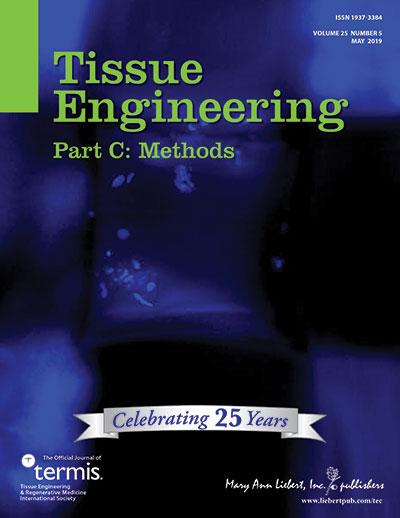
Credit: (c) 2019 Mary Ann Liebert, Inc., publishers
New Rochelle, NY, June 19, 2019-Surfaces that enable endothelial cell attachment without causing blood clotting are needed for various tissue engineering efforts. A new approach involving phage display has been used to identify unique peptides with these typically divergent characteristics. The work is published in Tissue Engineering, a peer-reviewed journal from Mary Ann Liebert, Inc., publishers. Click here to read it for free through July 20, 2019.
Maria Chiara Munisso, PhD, and Tetsuji Yamaoka, PhD, both at the National Cerebral and Cardiovascular Center Research Institute, Osaka, Japan, present their work in an article titled “Evolution of Phage Display Approaches to Select Highly Specific Hemocompatible Peptides”. The authors developed a high-throughput phage display selection protocol to identify peptides with high affinity for endothelial cells using both positive selection and an extra negative selection against platelet-binding sequences, and a phage binding index was used to compare affinities to those of naked M13 phage. After modification with candidate peptides, an expanded polytetrafluoroethylene surface was tested for endothelial progenitor cell binding and clotting induction, and a sequence with desirable dual characteristics was validated.
“The use of Negative-Positive bio-panning with the techniques proposed by the authors demonstrates a clear improvement in strategies to identify peptides for biofunctionalization,” says Tissue Engineering Co-Editor-in-Chief Antonios G. Mikos, PhD, Louis Calder Professor at Rice University, Houston, TX. “This can dramatically improve the search for new biofunctional peptides which can be used across all facets of tissue engineering and medical devices.”
###
About the Journal
Tissue Engineering is an authoritative peer-reviewed journal published monthly online and in print in three parts: Part A, the flagship journal published 24 times per year; Part B: Reviews, published bimonthly, and Part C: Methods, published 12 times per year. Led by Co-Editors-in-Chief Antonios G. Mikos, PhD, Louis Calder Professor at Rice University, Houston, TX, and John P. Fisher, PhD, Fischell Family Distinguished Professor & Department Chair, and Director of the NIH Center for Engineering Complex Tissues at the University of Maryland, the Journal brings together scientific and medical experts in the fields of biomedical engineering, material science, molecular and cellular biology, and genetic engineering. Leadership of Tissue Engineering Parts B (Reviews) and Part C (Methods) is provided by Katja Schenke-Layland, PhD, Eberhard Karls University, Tübingen, Heungsoo Shin, PhD, Hanyang University; and John A. Jansen, DDS, PhD, Radboud University, and Xiumei Wang, PhD, Tsinghua University respectively. Tissue Engineering is the official journal of the Tissue Engineering & Regenerative Medicine International Society (TERMIS). Complete tables of content and a sample issue may be viewed on the Tissue Engineering website.
About the Publisher
Mary Ann Liebert, Inc., publishers is a privately held, fully integrated media company known for establishing authoritative peer-reviewed journals in many promising areas of science and biomedical research, including Bioelectricity, Stem Cells and Development, Human Gene Therapy, and Advances in Wound Care. Its biotechnology trade magazine, GEN (Genetic Engineering & Biotechnology News), was the first in its field and is today the industry’s most widely read publication worldwide. A complete list of the firm’s 80 journals, books, and newsmagazines is available on the Mary Ann Liebert, Inc., publishers website.
Media Contact
Kathryn Ryan
[email protected]
Original Source
https:/
Related Journal Article
http://dx.



